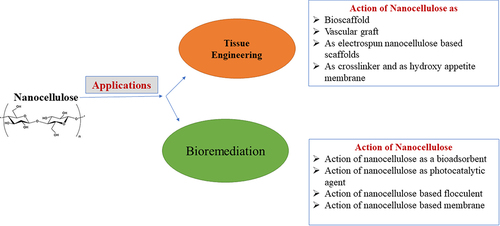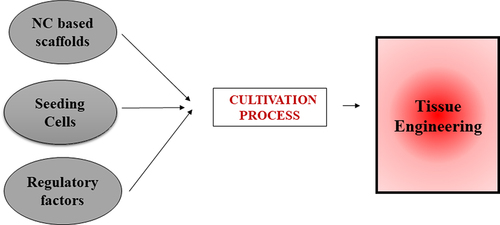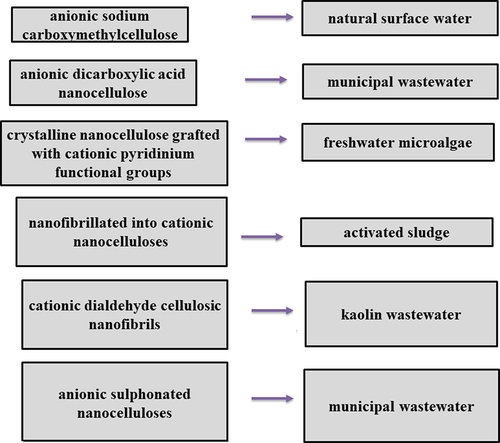Figures & data

Figure 1. Schematic representation of basic factors involved in the cultivation process during tissue engineering.

Figure 2. Schematic representation of nanocellulose based skin scaffolds. It represents the preparation of electrospun PLGA/NCC membranes with favorable biocompatibility.

Figure 3. Schematic representation of pollutants removed in the contamination remediation by nanocellulose.

Table 1. Functionalization of nanocellulose for bioremediation process

